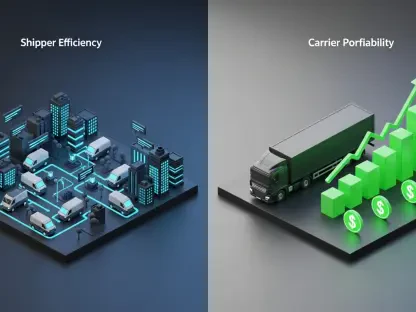Setting the Stage for Innovation in Medical Logistics
In the fast-paced world of healthcare logistics, where every second counts in delivering critical medical supplies to patients, efficiency and safety are paramount. Consider the challenge faced by a leading homecare service provider supporting over 750,000 patients across Europe, managing everything from oxygen therapy equipment to sleep apnea devices, which demands storage solutions that go beyond standard warehousing. The complexity of handling such a vast array of sensitive materials requires innovative approaches. This guide explores how tailored logistics systems can transform operations in the medical sector, focusing on a groundbreaking collaboration that has set a new standard for efficiency and compliance.
The importance of best practices in medical logistics cannot be overstated, as they directly impact patient care and operational costs. A well-designed storage system ensures that healthcare providers can respond swiftly to patient needs while maintaining strict safety protocols. This guide delves into the customized solutions developed by a leading storage technology expert for a major medical service provider, highlighting actionable strategies that other organizations can adopt to streamline their operations.
Best Practices for Customized Medical Logistics Solutions
Leveraging Tailored Storage Systems for Operational Efficiency
A cornerstone of effective medical logistics lies in the customization of storage infrastructure to meet specific industry demands. For a prominent homecare service provider in Vienna, a bespoke solution was crafted using a framework known as Innovative Logistic Solutions (ILS). This approach involved designing storage systems that could handle a high volume of medical supplies—approximately 2,800 containers—through specialized racking setups. The result was a seamless integration of static and dynamic elements that optimized space and workflow, offering a model for other healthcare entities looking to enhance their storage capabilities.
The implementation of advanced racking systems, such as order-picking racks with integrated flow lanes and pallet racking setups, demonstrated how tailored designs can address unique logistical challenges. These systems were not only built to store vast quantities of equipment but also to facilitate quick access and retrieval. By focusing on specific needs like scalability and adaptability, this solution serves as a benchmark for organizations aiming to improve inventory management without compromising on speed or safety.
Integrating Automation for Time Savings and Workflow Optimization
Automation stands as a game-changer in modern medical logistics, significantly reducing manual effort and time spent on repetitive tasks. At a state-of-the-art facility in Vienna, the use of automated roller and vertical conveyors transformed the logistics chain from goods receipt to dispatch. This technology streamlined picking routes, ensuring that staff could locate and prepare items with unprecedented speed. A documented 45% reduction in order-picking time underscores the tangible benefits of such innovations, providing a compelling case for automation in high-stakes environments.
Beyond mere time savings, automated systems enhance precision in handling sensitive medical goods, minimizing errors that could affect patient outcomes. The strategic placement of conveyors across multiple storage levels allowed for a fluid movement of items, eliminating bottlenecks in the supply chain. Healthcare organizations considering similar upgrades should prioritize comprehensive workflow analysis to ensure that automation aligns with their operational goals, maximizing return on investment.
Ensuring Safety in Handling Returned Medical Equipment
Safety protocols are non-negotiable in medical logistics, especially when dealing with returned equipment that may pose contamination risks. A robust best practice involves the strict separation of contaminated and non-contaminated items through dedicated transport mechanisms. In a notable Vienna-based project, vertical conveyors were employed to move returned devices to a designated first-floor decontamination area, complete with a fire protection section and synchronized safety doors. This setup ensured compliance with stringent health standards while protecting staff and inventory.
The decontamination process itself was designed for efficiency, allowing cleaned devices to be returned to circulation via a separate conveyor system. Such meticulous attention to safety not only mitigates health risks but also builds trust with regulatory bodies and patients. For organizations aiming to replicate this model, investing in specialized zones and safety infrastructure is critical to maintaining a secure and compliant operation.
Optimizing Space and Compliance with Specialized Storage
Space optimization and adherence to industry regulations often present significant challenges in medical logistics, but they can be addressed through innovative storage designs. The use of specific shelving for hazardous materials and the addition of a steel platform with an emergency ladder exemplify how tailored solutions can maximize limited space while ensuring safety. These elements were integrated into a Vienna facility to store items requiring special conditions, demonstrating a practical approach to meeting diverse storage needs.
Compliance with medical industry standards was further supported by these customized setups, which provided flexibility for future expansion. This adaptability is essential in a sector where regulations and demands evolve rapidly. Healthcare providers should consider partnering with storage experts who can offer scalable solutions, ensuring that their facilities remain compliant and efficient as operational needs grow over time, such as from 2025 to 2027.
Reflecting on Success and Planning Ahead
Looking back on the transformative collaboration between a leading storage technology provider and a major medical homecare service in Vienna, the impact of customized logistics solutions became evident in enhanced efficiency and safety. The integration of advanced racking, automation, and dedicated safety protocols redefined operational standards, setting a precedent for the industry. This partnership proved that tailored approaches could yield significant time savings and ensure compliance with rigorous health standards.
Moving forward, healthcare organizations should take inspiration from this success by assessing their unique logistical challenges and seeking partnerships with experienced providers. Exploring scalable, technology-driven solutions that prioritize both efficiency and safety can pave the way for improved patient care. As the industry continues to evolve, staying proactive in adopting innovative storage systems will be key to maintaining a competitive edge and delivering exceptional service in the dynamic landscape of medical logistics.









